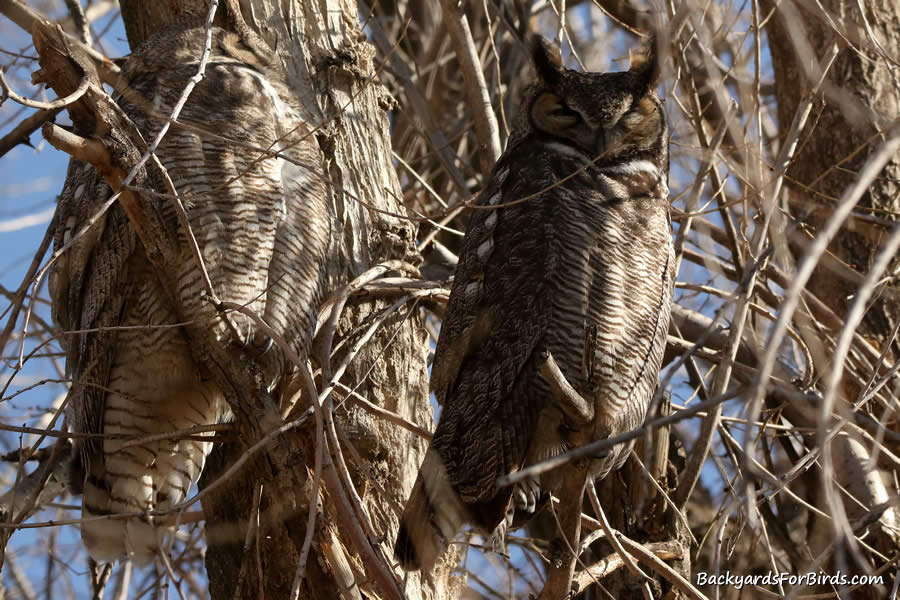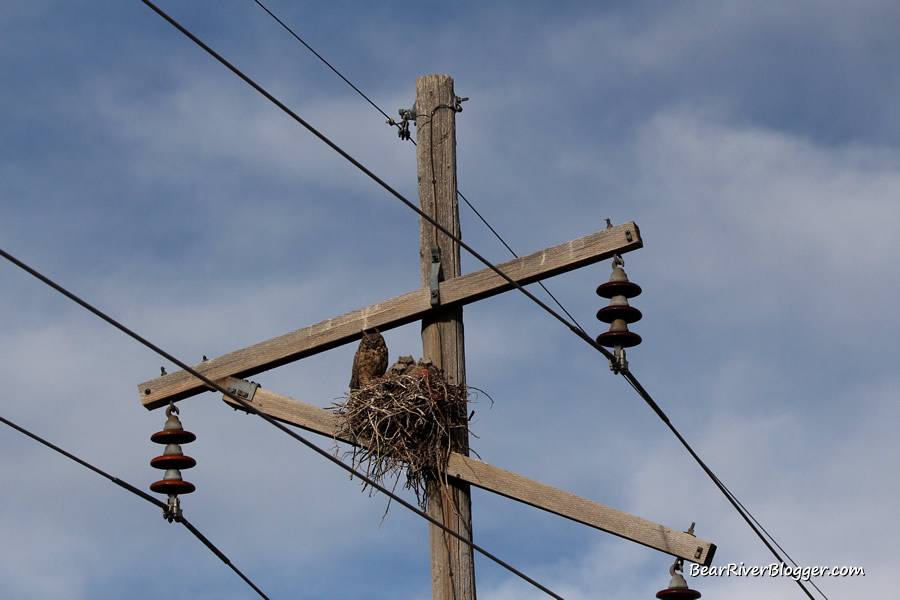If you were to ask me what bird I love seeing in my backyard more than any other, without any hesitation I would say the great horned owl.
Over the course of the last 22 years or so, I have seen plenty of these strikingly beautiful birds perched during the day in many of the sprawling elm trees on my property.
It goes without saying, however, great horned owls are indeed quite impressive when viewed in person and only a few short yards away.
Numerous times have I been about 30 feet away as one or even a pair of great horned owls contently perched themselves on a limb just above my back door, keeping tabs on me as I go about my yardwork with those large and slightly intimidating eyes.
And each time they decided to pay me a visit, I am completely awe-struck with how magnificent the great horned owl really is.
But even with the countless visits I’ve enjoyed over the past couple of decades, one thing I have not had is a pair of great horned owls that have nested on my property.

This was especially perplexing for me when last fall and winter I had a pair of great horned owls in my backyard, literally on a daily basis for several months perched on the same branch just over my back porch.
Great horned owls are pretty territorial, especially during the breeding season when the pair will roost together somewhere near the nest site for several months before the eggs are laid.
And as such, last year I thought for sure I was finally going to have a nesting pair of owls with how long they stayed.
But it just wasn’t to be and after doing some research on the matter, I found out why the owls didn’t nest in my yard despite the countless visits I do get every year.
Great horned owls generally don’t build their own nests but rather they takeover and use nests from other birds, including hawks, crows, ravens, and even herons.
They will also nest on cliffs, in cavities such as an old tree, in man-made structures like old buildings, on platforms such as telephone poles, and even on the ground when no other suitable locations exist.

And that, my friends, is why the great horned owls never nested in my yard despite countless visits and extended stays, there was just no place for them to nest in as they typically steal or take nests from other large birds.
From this past year’s experience with the pair of great horned owls, I am actually considering putting up an owl box or nesting platform to offer them a place to hopefully nest in next year.
I’m not exactly sure how this would work with a potential pair of American kestrels nesting in another location on my property if my newly added kestrel box does indeed get used down the road, however.
But that is a bridge we will have to cross if and when that day comes.
If I did end up having to choose between the two species of birds nesting in my yard, I would definitely have to give the nod to the great horned owl, but hopefully, the two will both nest in my yard and are somehow able to co-exist.

Great horned owls do start to nest in late winter, earlier than most other species of birds in fact.
They typically lay 1-4 eggs and both parents provide food for the owlets, even several months after the young owls have left the nest.
If you are a bird watcher like I am, don’t forget to head on over to our subscribe page and sign up for email notification for future blog posts as well as share our site with your birding friends.
We also have a small but growing YouTube channel we occasionally post updates about the Bear River Migratory Bird Refuge as well as short nature clips when we can capture them with our camera.
Burrowing Owl T-shirt, available in a variety of colors and styles. Visit our online store for more information or to make a purchase, and use coupon code save20 for 20% off for a limited time.








